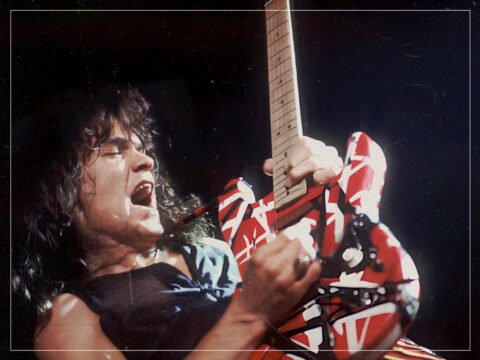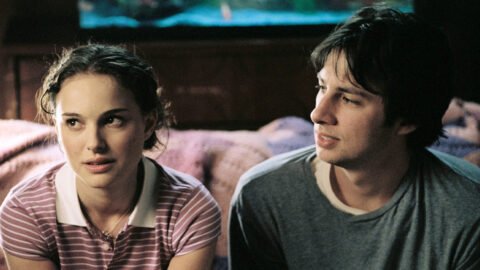A friend plucked the thin volume from the books that lined her home office and handed it to me — June Jordan’s His Own Where. In the writer, activist, and queer icon’s young adult novel, first published in 1971 and reissued by Feminist Press in 2010, Buddy, a Black teen living in Brooklyn, runs away with his new girlfriend, Angela, to an abandoned building tucked inside a cemetery. There, he follows his single father’s example, carefully transforming the space into a home unlike anything his old neighbors would ever imagine. I learned from my friend that Jordan was pursuing a career in urban planning before becoming a writer, and studied with the visionary designer Buckminster Fuller. Written in a poetic Black vernacular unique to Jordan’s pen, the characters rush away from their known world, into their burgeoning love and an architecture of their own making:
They talk to keep the house around them. His voice her voice shape him and her familiar (shapes) inside the unfamiliar house. They talk but standing still talk trying to imagine how they can stay and move and sleep and change where they are standing now, inside.
That book came immediately to mind when I entered the exhibition Fantasizing Design: Phyllis Birkby Builds Lesbian Feminist Architecture, curated by historians Stephen Vider and M.C. Overholt. An architect, activist, and teacher, Birkby harnessed her knowledge and lesbian feminist politics to encourage countless people to reimagine their built environments. Starting in 1973, she began hosting “environmental fantasy” workshops. Alluding to the misogyny that continually limited her professional path, she writes in a 1975 essay she co-authored: “In an attempt to discover the perceptions women have about the design of their environments we have tried to cut through sexist conditioning by going deeply into the origin of the creative process—fantasy. … In this way our dreams and visions can become tools for the creation of actual change.”

These workshops and the imaginings they produced undergird the exhibition, which features materials from Birkby’s life, and from the web of friends, lovers, and colleagues who participated in and shaped her physical and dreamt-of reality. Drawings from these fantasy workshops are some of the most compelling images on view. One by Birkby features a network of interlinked circular structures that invite would-be inhabitants to move through spaces and stages of coexistence, from “entry” and “investigation” domes to a “conversion area” and “multiple relationship” domes, allowing complex networks of interrelations to thrive and evolve. I couldn’t help but chuckle reading some of the final labels: “done dome” and “uninvolved dome.” Who hasn’t been there?
The exhibition also includes newly commissioned artwork by LJ Roberts (full disclosure: Roberts is a friend), as well as Audrey Tseng de Melo Fischer and Chong Gu, co-founders of the collective Rehearsing. These contemporary installations highlight Birkby’s rich ideas and life, and, particularly with Tseng de Melo Fischer and Gu, bring her prompts into the present.

The same day I visited the Birkby exhibit, I saw Gordon Hall’s Hands and Knees at The Kitchen’s temporary home in the Westbeth Artists Housing complex, itself a kind of fantasy space, housing hundreds of artists, as well as a number of arts organizations. The exhibition and its accompanying performances, in which performers alternately carry each other through the space or rest on the sculptures, are rooted in an arrangement of abstract sculptures formed around recognizable curvilinear metal chair frames, as well as a set of support structures. When in use during the performances, they demonstrate an adaptive reuse of the chair-based works, in which bodies recline across the sculptures. While Hall’s stated intentions center on a “transgender politics that questions the norms that govern embodied life,” what felt top of mind seeing the work inside a gallery with views out to the park along the Hudson River, was creative adaptations of hostile architecture, not only by unhoused populations but also everyday users of spaces that always seem to be signaling limitations to how we should be using them, like benches intended to stop people from laying down, endless signs telling us what we’re not allowed to do, gates poised for closing, and police barricades stopping us from filling spaces entirely.
Much of the world has grown hostile today. The home office where my friend handed me that book has since burned to the ground, a casualty of the fires in Los Angeles this January. And indefensible ruin is being visited on many corners of the world. Birkby presents fantasy not as a solution, but as a tool. The dream of another way of living has served as a lodestar for many whose situations seemed intractable. I was struck by the emphasis on collectivity and support in these works by queer women and trans artists, on stripping away an architecture of isolation, singular use, and protectionism. Thinking about them, I couldn’t help but take up Birkby’s prompt myself: What would my fantasy environment look like, and how would I incorporate my lovers and friends? How would it speak to my dreams of a different world?





Fantasizing Design: Phyllis Birkby Builds Lesbian Feminist Architecture continues at the Center for Architecture (536 LaGuardia Place, Greenwich Village, Manhattan) through September 2. The exhibition was curated by Stephen Vider and M.C. Overholt.
Gordon Hall: Hands and Knees continues at The Kitchen (163 Bank Street, 4th Floor, West Village, Manhattan) through May 31. The exhibition was organized by Matthew Lyons.





